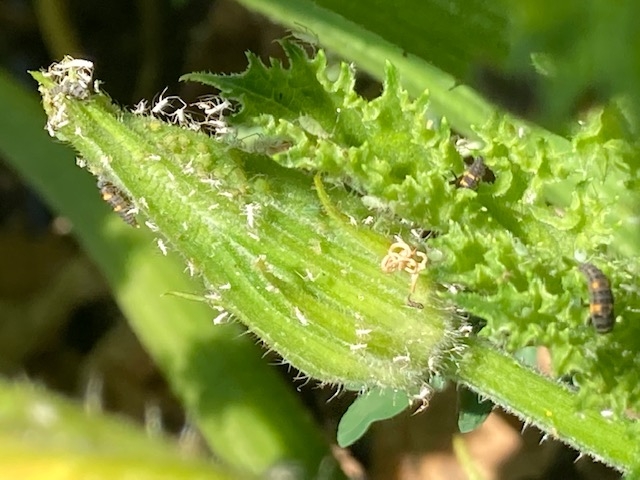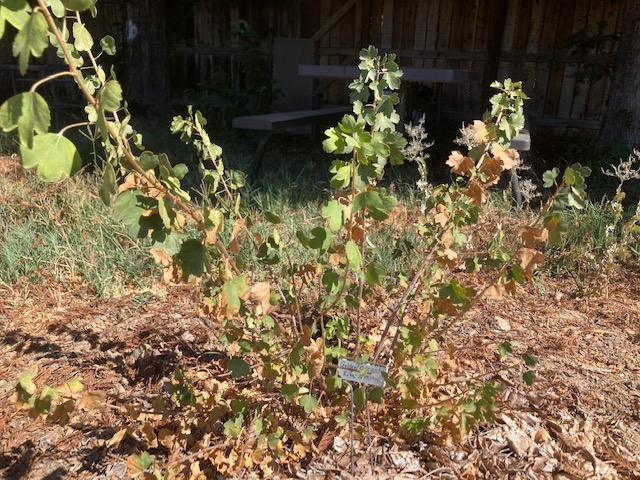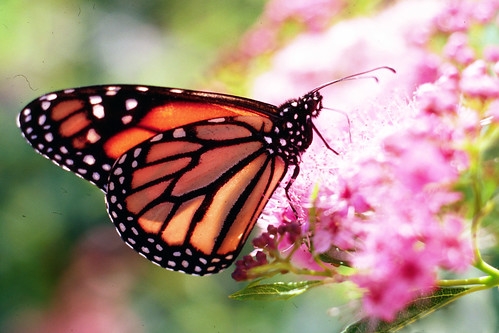
Date: Saturday, October 15, 2022
Time: 9:00 am – 10:30 am
Where: Stanislaus Agricultural Center, 3800 Cornucopia Way, Harvest Hall Rooms D&E.
Register: http://ucanr.edu/monarchs/2022
- Author: Denise Godbout-Avant

Fascinating Bat Bits
Bats are the only true flying mammal, making up a quarter of the world's mammals. There are 1,100 species of bats, with forty species in the USA. California has twenty-five species, most of which are insectivores.
Bats are one of only three mammals that generally sleep upside down, with sloths and manatees being the other two.
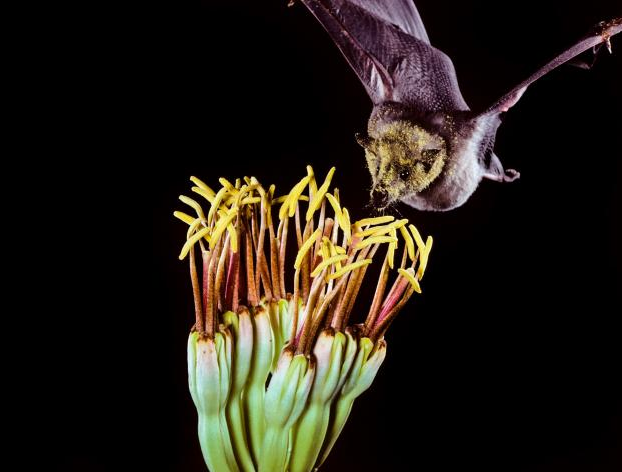
According to the U.S. Forest Service, fruit-eating bats are responsible for dispersing seeds that grow into bananas, avocados and 300 other plant species around the world. Agave plants (which are the source of tequila and mezcal) evolved to supply most of their nectar after dark to attract the nocturnal bats to cross-pollinate their flowers.
Insect eating bats often consume their own weight in insects each night, eating up to a thousand mosquito-size insects in an hour! It is estimated that bats' value to agriculture could exceed $23 million per year.
Bats are excellent fliers with some species flying up to 60-100 mph. They can locate and catch insects in midflight in total darkness, using echolocation, which is the ability to locate objects by reflected sound waves.
Where Do Bats Live?
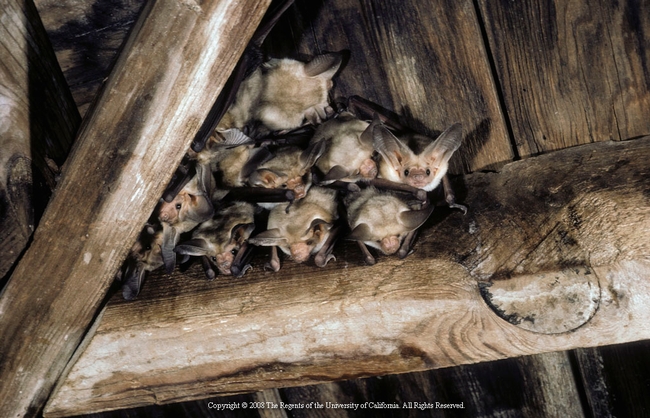
Usually, males and females with young will roost separately, but in late summer or early autumn, males may join the colony. In the winter when insects become scarce, some bats hibernate, while others may migrate to warmer areas, returning in the spring months.
Bat Myths and Facts
Because of their nocturnal habits, bats are rarely seen, so seem mysterious and are often misunderstood.
Myth - Bats suck people's blood.
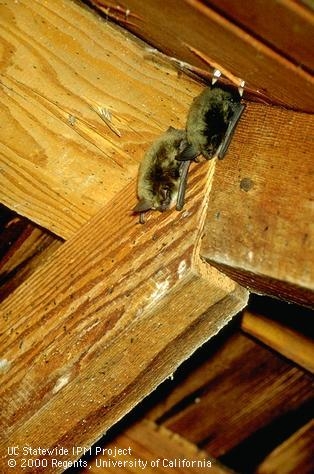
Myth - Bats are blind.
Fact - Bats do have small eyes, but they are functional. Megabats, which are larger bats such as fruit bats (found in forests of Africa, Asia, Australia, and Europe), search for their food using both sight and smell.
Myth - Bats fly towards and get tangled in people's hair.
Fact - Bats hang upside down from their roosts and tend to drop down and flap their wings before they start to lift off in flight. So, though it may appear the animals are swooping down on you and want to nest in your hair, they're not. In fact, bats don't make nests.
Bats as Pests
Like many mammals, bats can contract rabies. It is rare for a rabid bat to bite a human. According to the World Health Organization, an estimated 59,000 humans die from rabies each year, with 99% of these deaths being due to contact with rabid, unvaccinated dogs.
Most bat parasites such as fleas and mites are host specific and cannot survive on other animals. No evidence exists of disease transmission to humans or domestic pets from bat parasites.
Bat droppings, known as guano, can harbor a widespread fungus found in soil, Histoplasma capsulatum, which causes Histoplasmosis in humans. However, most human infections come from birds.
If You Find a Bat. . .
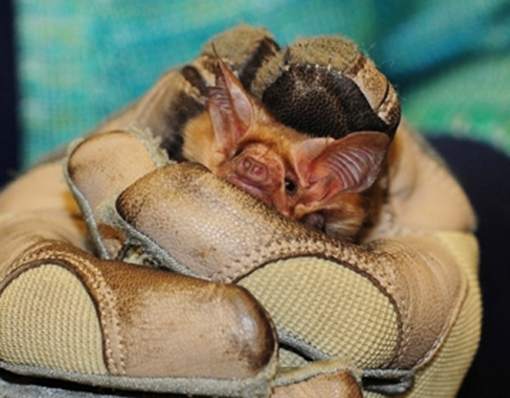
If you find a bat laying on the ground, please leave it alone, especially in the spring or fall, when they may be migrating and are just resting during their long journey. If after an hour or two, the bat has not moved, it is likely sick and should be avoided. If it is in an area where children or pets can access it, you may want to trap it. While wearing leather gloves, carefully put a box over it and slide a piece of cardboard underneath it to trap it. Then contact your local wildlife rescue organization (in Stanislaus County that is the Stanislaus Wildlife Care Center at 1220 Geer Rd., Hughson, 209-883-9414).
Bats in Trouble
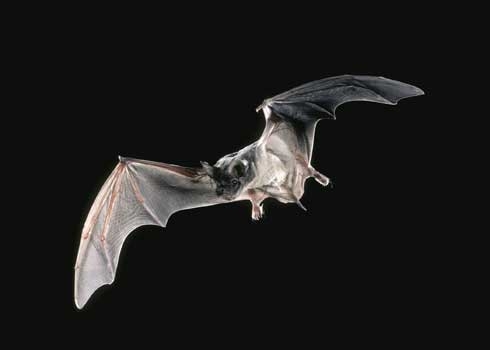
One of their most dire threats comes from white-nose syndrome (WNS), a disease that has decimated bats in the USA and Canada. Bats that hibernate during the winter do so to ration their energy and survive during a time of year when insects are scarce. The WNS fungus grows on bats' skin which disturbs their hibernation, thus increasing the amount of energy they are using, resulting in dehydration, starvation and often, death. However, a 2015 breakthrough appears promising. A team of researchers treated infected bats infected with a common bacterium on bananas which seems to stop the growth of the fungus. The treated bats were successfully released back to the wild.
How Can You Help Bats
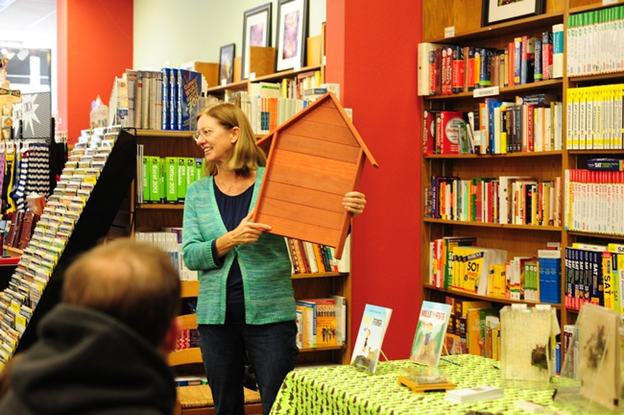
- Learn more about bats, educating friends and family.
- With an iNaturalist app on your smartphone, you can take part in citizen science by observing bats in a park or your own backyard.
- Build a bat house. Bats need places to roost, rest, raise young. UC IPM gives information how to build a backyard bat house: http://ipm.ucanr.edu/PMG/PESTNOTES/pn74150.html. Other bat house links are provided in Resources. Choose a pesticide-free open location with five to seven hours of sunlight. Bats prefer interior temperatures of 80-100ºF during the summer.
- Stay out of caves when directed. Bats need to be undisturbed in caves, particularly in the winter months. If you do visit caves where bats live, clean your shoes before and after to avoid tracking white nose syndrome to another cave.
Where to Go See Bats
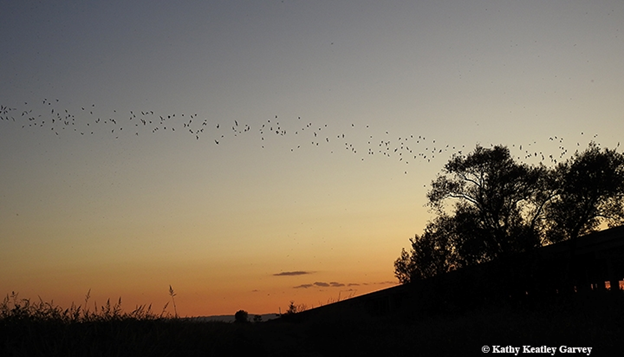
- Yolo Bypass Wildlife Area: Not far from Sacramento, this colony resides under the Yolo Causeways, a 3-mile-viaduct on Interstate 80. These are Mexican Free-tailed bats (Tadarida brasiliensis) who take up residence in the crevices in the concrete bridge. The colony numbers up to a quarter-million bats in size. If you want to see the bats yourself, you can find a place with a good view, but you can also book tours that are specifically designed to get you close enough to see the colony. https://www.yolobasin.org/bats2022/
- Consumnes River Preserve: Near Lodi, several species of bats are found in both the riparian forest and in a bat-friendly bridge built over the Cosumnes River. https://www.nature.org/en-us/get-involved/how-to-help/places-we-protect/cosumnes-river/
All About Bats Webinar
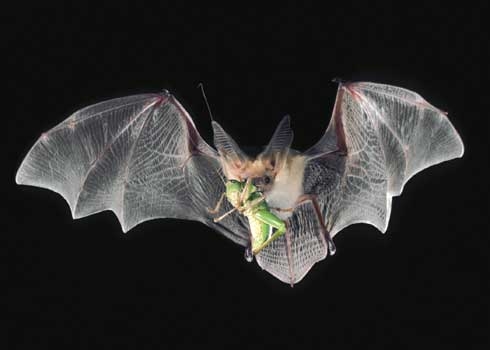
Webinar: “All About Bats”
Where: On Zoom
When: Wednesday, October 12, 2022, from 1:00-2:30 p.m
Instructor: Rachael Long, UC ANR Integrated Pest Management for Yolo, Solano and Sacramento Counties
Cost: Free
Register: https://ucanr.edu/all/about/bats
Resources
What Insects Do Bats Eat? https://ucanr.edu/blogs/bugsquad/index.cfm?tagname=bats
Bats, Allies to Farmers: https://ucanr.edu/blogs/blogcore/postdetail.cfm?postnum=23708&postnum=23708
Bats in the Belfry: https://ucanr.edu/blogs/blogcore/postdetail.cfm?postnum=17395
Fear of Bats and Its Consequences by Merlin Tuttle: https://secemu.org/wp-content/uploads/2018/05/Tuttle_et_al_2017.pdf
Bat Myths: https://kids.nationalgeographic.com/nature/article/bat-myths-busted
Myth Busters: https://www.nps.gov/subjects/bats/myth-busters.htm
Nature Conservancy – Bats: https://www.nature.org/en-us/get-involved/how-to-help/animals-we-protect/bats/
Bat Conservation and Management – Bats in Buildings:https://batmanagement.com/blogs/bat-exclusion-control/bats-in-buildings
White nose syndrome: https://blog.nature.org/science/2015/05/27/bananas-to-bats-the-science-behind-the-first-bats-successfully-treated-for-white-nose-syndrome/
All About Bat Houses: https://batmanagement.com/pages/lc-bh-overview
Selecting a Quality Bat House: https://www.merlintuttle.org/selecting-a-quality-bat-house/

Did you know? All cacti are succulents, but not all succulents are cacti?
This class will focus on the non-spiny succulent plants that can be grown in our area, especially those that use less water - and there are a lot to choose from! During class you'll learn the names of common succulent plants, their sun and water requirements, and how to care for them. Classes last approximately 90 minutes.
Stanislaus County Libraries – Gardening with Succulents Classes
Tuesday, October 4, 2022 at 6:00 p.m. – Salida Library
Saturday, October 15, 2022 at 2:00 p.m. – Riverbank Library
Monday, October 10, 2022 at 6:00 p.m. – Ceres Library
Tuesday, October 18, 2022 at 6:00 p.m. – Oakdale Library
Monday, October 24, 2022 at 6:15 p.m. – Modesto Library
Wednesday, October 26, 2022 at 6:00 p.m. – Turlock Library
Stanislaus County Agricultural Center, Harvest Hall, Gardening with Succulents Workshop

Cost: $25
Space is limited, register now at https://ucanr.edu/succulent/workshop/2022
Turlock Community Gardens – Drip Irrigation
Saturday, October 15, 2022 from 9:00-10:30 a.m.
Want to know more about how drip irrigation works? Come learn from our Master Gardener who will give you an overview. Bring your questions!
Patterson Library – Composting Basics
Wednesday, October 12, 2022 at 2:30 p.m.
If you missed our composting classes held at other libraries, you still have a chance to take this one! Learn the basics of composting, including the difference between “greens” and “browns,” what you can and can't compost, and simple tricks for being successful. Plus, one lucky person will take home a free compost bin!
*no need to register for Stanislaus County Library or Turlock Community Garden Classes. Just come. We look forward to meeting you!
- Author: Denise Godbout-Avant
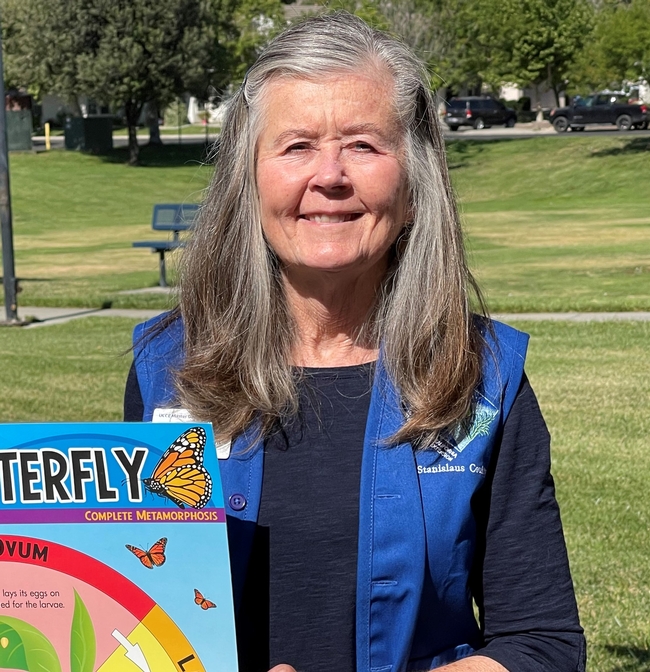
Life Cycle
Like all butterflies, Monarch butterflies have four life stages: 
- Egg: The female Monarch lays her eggs on their sole host plant, the milkweed (Asclepias). She generally lays one egg per plant. Each egg is about the size of a grain of salt.
- Larva (Caterpillar): After 3 – 5 days, the Monarch egg hatches to a larva, also called a caterpillar, eating only milkweed leaves. They go through five instar stages over a period of 10 – 14 days as they grow from 1/16th of an inch to about two inches, molting their exoskeleton at each stage.
- Pupa: The caterpillar finds a protected place to develop its chrysalis for the pupal stage. During the next 11-15 days the pupa will change to an adult by liquifying its body while inside the chrysalis, ultimately emerging to the adult butterfly.
- Adult: In the final hours before emergence, the chrysalis becomes translucent, a crack will appear, with the Monarch butterfly freeing itself from the case. Hanging from the now-empty chrysalis case, it will spend the next few hours pumping fluid into its wings until they are firm enough to fly. Eventually it will take flight and start seeking out nectar for its 1st meal. Adult Monarch butterflies feed on flowers, which makes them pollinators. The nectar provides energy for flight, mating, and migration.
Milkweed
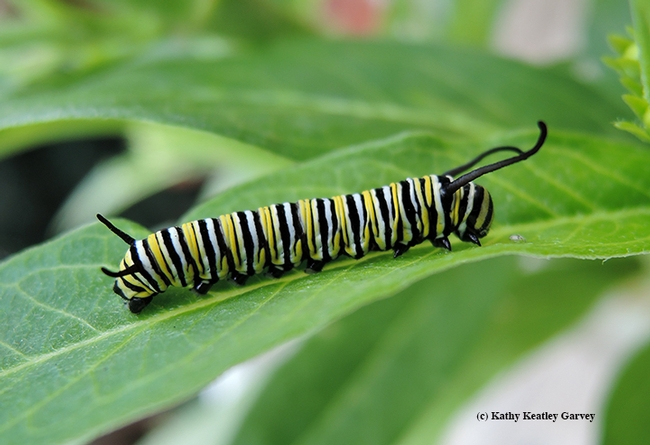
Migration
The Monarch migration is extraordinary with none quite like it in the butterfly world. A Monarch butterfly begins an epic one-way journey south up to 2,800 miles to a specific place where they have never been to before, where their great-grandparent spent the previous winter. It remains largely a mystery how successive generations know the route and where to spend the winter months.
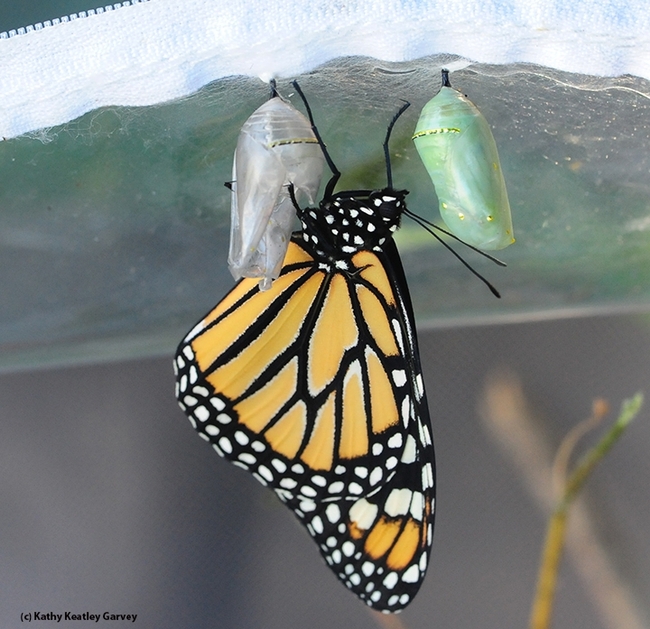
Late in summer or early fall, a final generation emerges. Triggered by changes in temperature and sunlight, this generation will migrate south. Known as the “Methuselah” generation (after the biblical patriarch said to have lived 969 years), they can live up to 6 – 8 months. They do not emerge as sexually mature butterflies, being in a “sexual diapause,” so their energies can be focused on developing flight muscles and storing lipids for their long journey south and surviving the winter months.
Come spring, with warming temperatures and longer days, these butterflies will become sexually mature, feed on nectar, mate, and start moving northward, laying eggs, which will hatch to continue the annual migration cycle.
You may see migrating Monarchs this fall in your garden feeding on nectar flowers, resting on flat flowers or rocks, or drinking from water sources. Admire them, but leave them be, since they still have some distance to go to reach their wintering grounds. In California, their wintering spots are along coastal areas from Monterey area (Pacific Grove) to San Diego.
Monarchs in Trouble
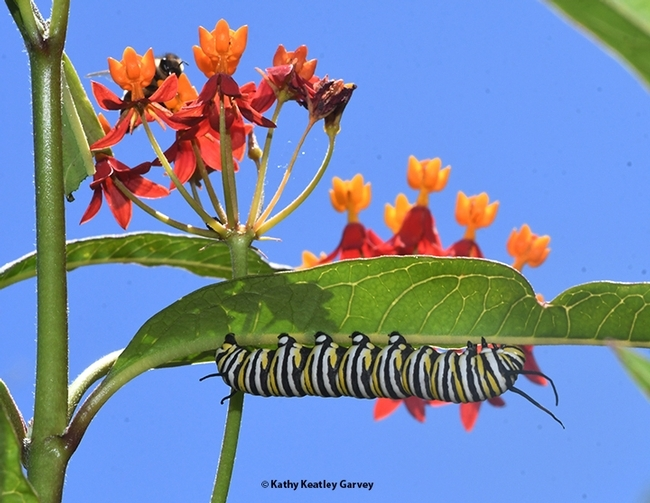
In temperate areas like the Central Valley, the tropical milkweed plant (Asclepias currasavica) does not go dormant. A parasite that lives on the plant is ingested by developing caterpillars and is linked lower migration success and reductions in lifespan. Choose milkweed species that goes through winter dormancy such as narrowleaf milkweed and showy milkweed (A. fasicularis and speciosa.)
The IUCN announcement states: "The western population is at greatest risk of extinction, having declined by an estimated 99.9%, from as many as 10 million to 1,914 butterflies between the 1980s and 2021.” In addition, "The larger eastern population also shrunk by 84% from 1996 to 2014. Concern remains as to whether enough butterflies survive to maintain the populations and prevent extinction."
Sign up for our Free Class!
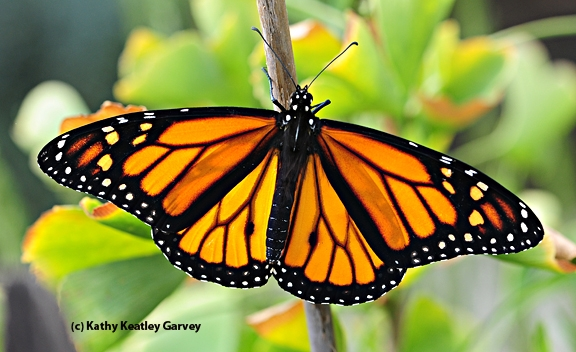
Date: Saturday, October 15, 2022
Time: 9:00 am – 10:30 am
Where: Stanislaus Agricultural Center, 1800 Cornucopia Way, Harvest Hall
Register: http://ucanr.edu/monarchs/2022
---------------------------------------------------
Resources:
- Art Shapiro's Butterfly Site https://butterfly.ucdavis.edu/butterflies
- Butterflies in Your Garden https://ucanr.edu/sites/CEStanislausCo/files/345791.pdf
- Xerces Society - Pollinator Plants: California https://xerces.org/publications/plant-lists/pollinator-plants-California
- UC Davis Arboretum – Larval Hosts for Butterflies https://arboretum.ucdavis.edu/blog/larval-host-plants-butterflies
- California Native Plant Society – Native Planting Guides https://www.cnps.org/gardening/choosing-your-plants/native-planting-guides
- Tropical Milkweed - a no grow https://xerces.org/blog/tropical-milkweed-a-no-grow
- Calscape CA native plants https://www.calscape.org/
- UC ANR Bug Squad Blog https://ucanr.edu/blogs/bugsquad/
- International Union for Conservation of Nature (IUCN) https://www.iucn.org/
- The Monarch: Saving Our Most Beloved Butterfly, by Kylee Baumle, St. Lynn's PressMilkweed Poisoning: https://www.poison.org/articles/milkweed-can-cause-serious-poisoning-204



